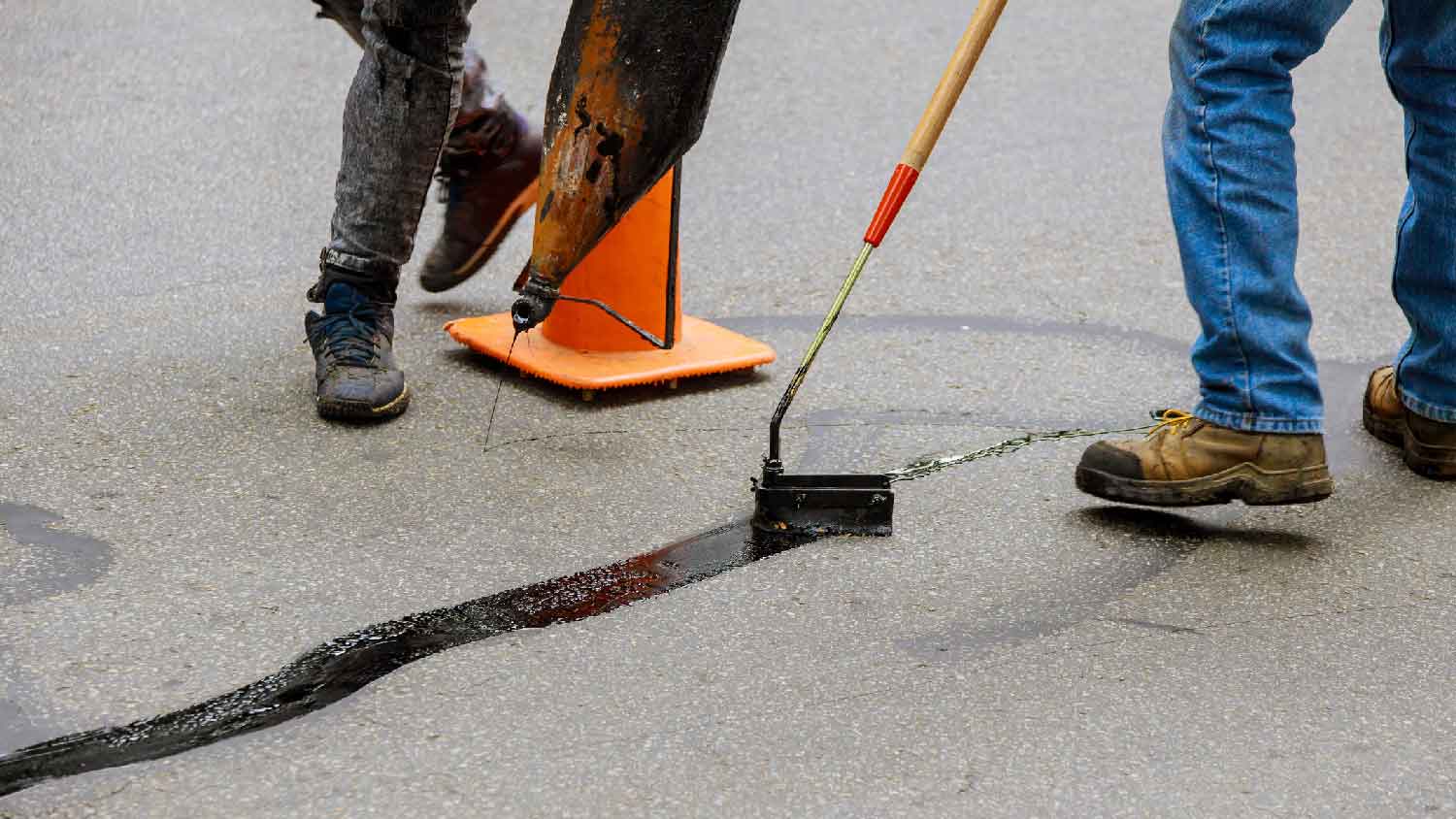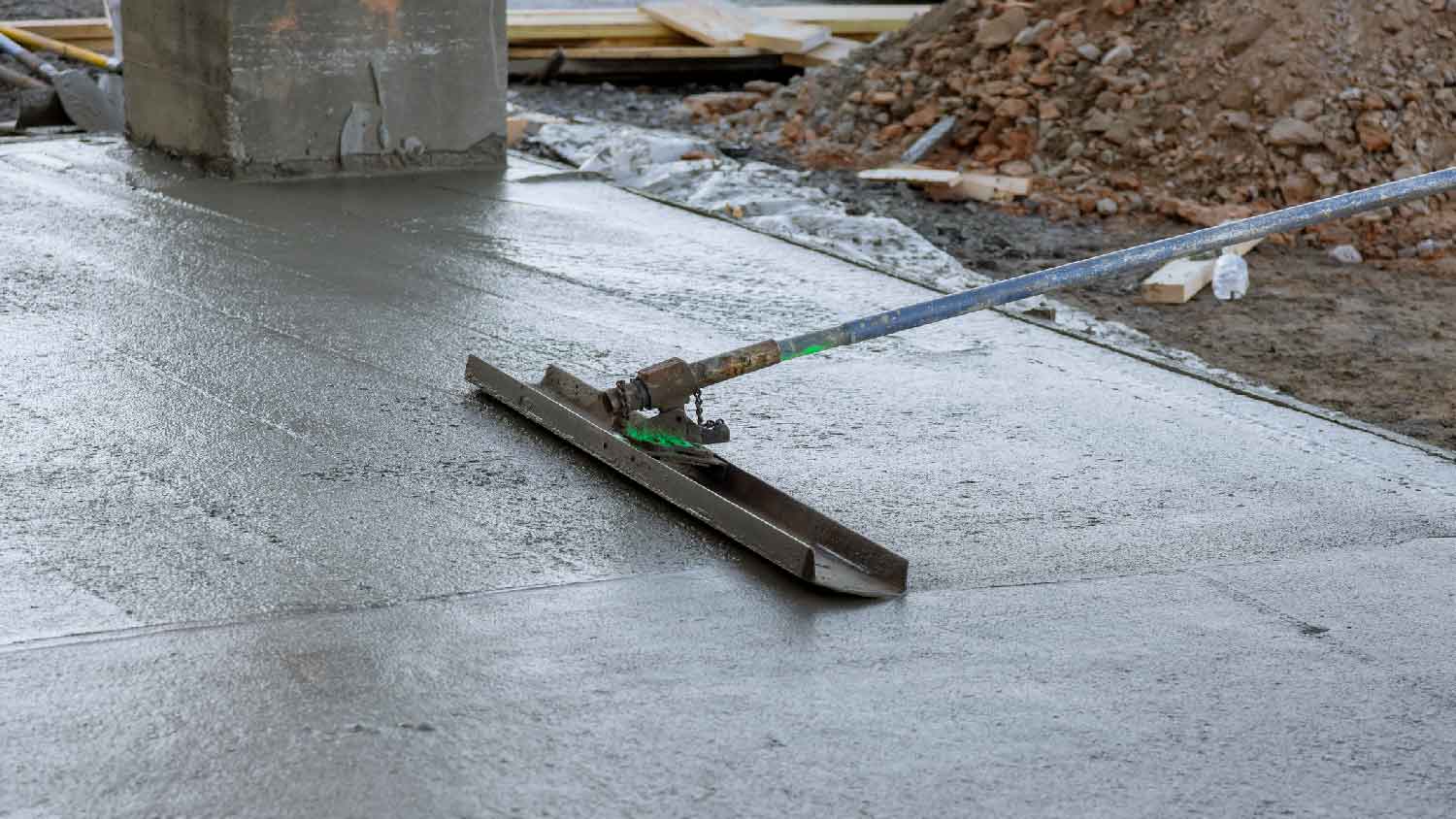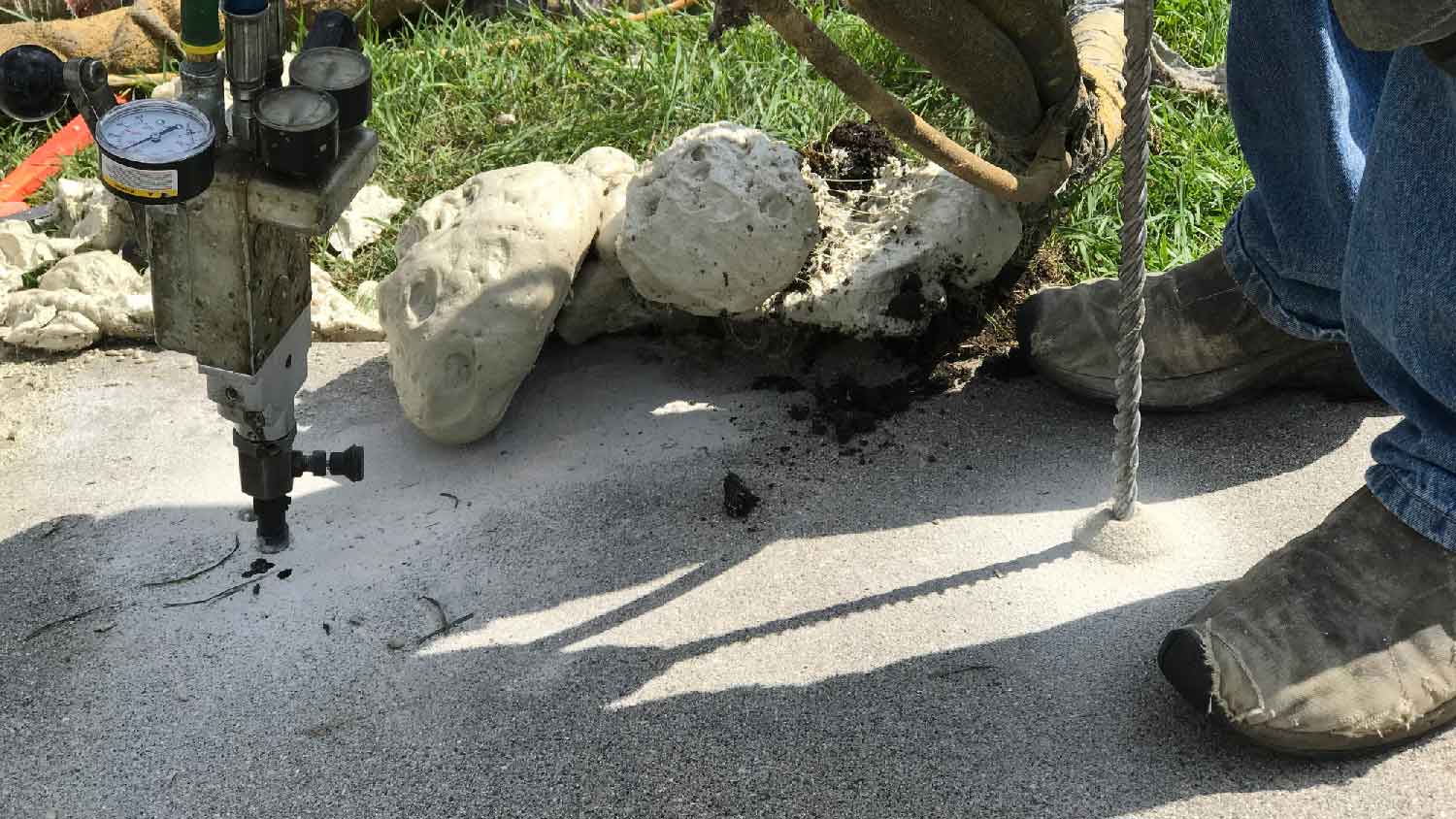7 Best Concrete Slab Repair Methods
These concrete repair methods can fix cracks, crevices, and everything in between


Concrete slabs serve as sidewalks, walkways, patios, and even home foundations, and while the material is highly durable, it can sustain damage over time. Whether it’s cosmetic damage, like a hairline surface crack, or structural damage resulting from soil movement under your home, these concrete slab repair methods can get your slab looking and functioning like new again.
1. Crack Sealing

One of the most common problems homeowners face with concrete slabs is purely cosmetic: cracking on the surface. It’s not always obvious that a concrete slab crack is aesthetic and doesn’t indicate structural damage, so you should call in a concrete company near you to investigate. A simple topical seal is likely the best option if it is just an aesthetic crack.
A professional will use a router or masonry saw to widen the crack and create a clean surface for the sealant to adhere to. They’ll then use a concrete sealant or Portland cement to grout over the crack and cover the seam.
| Pros | Cons |
|---|---|
| Good for any surface | Non-structural |
| Not permanent |
Best for: Any surface crack that isn’t structural on walkways, sidewalks, concrete steps, patios, or home foundations
2. Crack Injection
A crack injection is an alternative concrete crack repair method that a contractor might use if the crack is suspected to be structural. Instead of grout, which the expert would use for a non-structural crack, your professional will use an epoxy injection. This is sometimes contained in concrete forming methods, like a mold.
The epoxy resists tensile force, so it can help prevent the crack from widening. The epoxy is also waterproof, so it will protect from water damage and worsening structural issues.
| Pros | Cons |
|---|---|
| Affordable | Not permanent |
| Non-invasive | Not DIYable |
Best for: Temporary fixes for minor structural cracks in concrete slabs
3. Crack Stitching
Crack stitching is an option in cases where tensile forces on the concrete slab—which aren’t common—are causing the crack. Stitching involves inserting long, thin, U-shaped metal braces along the length of a crack, with the sides of the braces embedded into the concrete on either side of the crack. The braces add strength to the slab and prevent the crack from widening.
In many cases, your contractor will couple crack stitching with a sealant to prevent water intrusion through the gap, as the staples don’t seal the crack themselves. As such, you’ll also need to factor in the cost of concrete sealing.
| Pros | Cons |
|---|---|
| Non-invasive | Not permanent |
| Prevents movement | Demands sealing |
Best for: Temporary fixes to structural cracks in a concrete slab foundation
4. Resurfacing

Resurfacing is the process of filling in and smoothing over divots where the surface of the concrete has crumbled or flaked off. Resurfacing is a purely cosmetic repair and won’t add any stability to your slab, but it’s a useful tool for sidewalks, walkways, patios, concrete steps, and even slab foundations that have visible surface imperfections.
Your contractor will scrape away any loose bits of concrete, clean the area, and apply a self-leveling mortar. As the name suggests, the flowable mortar will fill in the surface imperfections and level itself out before curing.
| Pros | Cons |
|---|---|
| Affordable | Non-structural |
| DIYable | Not permanent |
Best for: Repairing cosmetic damage on flat surfaces of concrete slabs, like peeling or crumbling
5. Mudjacking
Mudjacking is a concrete leveling solution for sinking concrete slabs that aren’t under load. It’s a suitable fix for sidewalks, walkways, concrete patios, and sometimes cracked concrete driveways.
The process involves a professional drilling a hole in the sunken portions of your slab and pumping a cementitious material underneath. The material raises the slab back up into place and then cures.
Mudjacking is a job you should leave to concrete repair professionals. Adding too much cementitious material under your slab can raise it too much and add weight to the soil below it, potentially worsening your problem. Mudjacking also isn’t a good option for home foundations in most cases, so most professionals will rely on polyjacking instead. However, mudjacking costs less than polyjacking.
| Pros | Cons |
|---|---|
| Affordable | Not DIYable |
| Fixes sunken slabs | Not permanent |
Best for: Leveling concrete slabs that aren’t under structural load, like sidewalks and walkways
6. Polyjacking

Polyjacking works similarly to mudjacking, but your professional will pump polyurethane foam under the slab instead of cementitious material.
Polyurethane foam has some distinct advantages, including remaining super lightweight while providing more strength. This reduces the risk of worsening the sinking concrete problem, making it suitable for concrete under structural load, like a slab foundation.
Polyjacking is also a job best left to the professionals. The foam expands once you pump it under the slab, so the work requires an intimate understanding of how much foam is appropriate. Doing it yourself risks causing additional structural damage.
| Pros | Cons |
|---|---|
| Fixes sunken slabs | Not permanent |
| Structural repair | Expensive |
Best for: Concrete leveling for slabs that are under structural load, like home foundations
7. Underpinning
Underpinning is one of the only permanent repairs for structural damage on a concrete slab, as it addresses the underlying problem instead of implementing a solution to slow down further damage.
Underpinning involves excavating under your slab and installing piers that reach down to stable soil and support the slab from underneath. The piers rest on deep soil that won’t expand and contract with changes in moisture levels, mitigating any further structural damage.
Not only is the process invasive, but the cost of underpinning a foundation often falls between $15,000 and $50,000, making it one of the most expensive concrete slab repair methods. It is, however, permanent.
| Pros | Cons |
|---|---|
| Permanent solution | Very expensive |
| Structural repair | Invasive |
Best for: Permanent fixes to sinking concrete slab foundations















